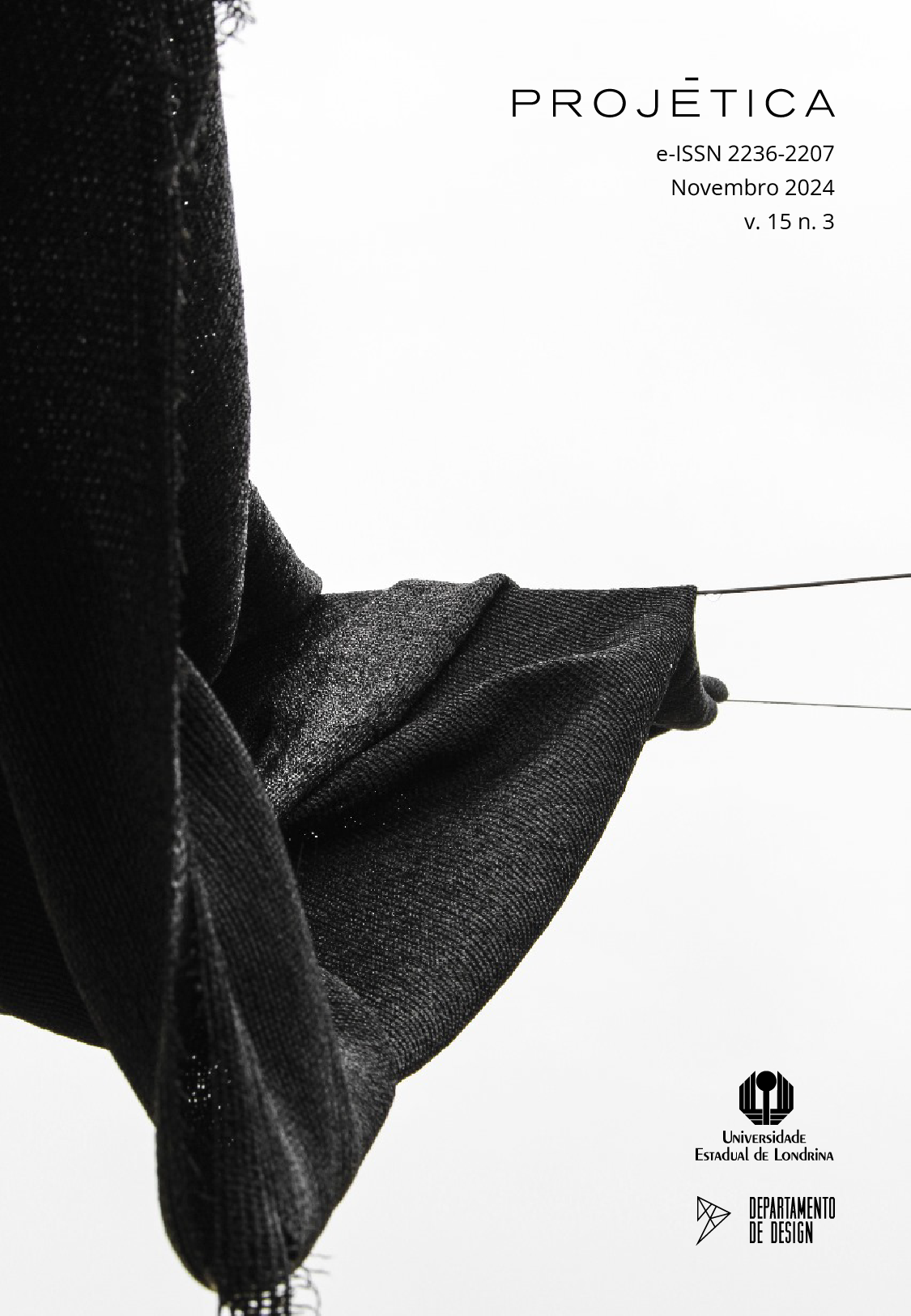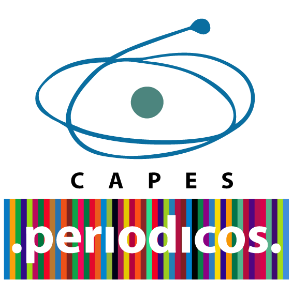Quem desenvolve novos alimentos?
Perspectivas do Design e Engenharia no contexto da inovação de alimentos.
DOI:
https://doi.org/10.5433/2236-2207.2024.v15.n3.47833Palavras-chave:
Engenheiros, Designers, P&D de AlimentosResumo
O artigo traz um panorama comparativo, através de uma revisão bibliográfica, sobre as perspectivas de pessoas designers e engenheiras no contexto de Pesquisa e Desenvolvimento (P&D) de alimentos. O desenvolvimento de alimentos processados é tipicamente realizado por pessoas engenheiras, que têm pouco contato com designers. Pesquisas mostram que Designers são mais abertos à incerteza, engajados com a estética, experienciais e experimentais que engenheiros. Engenheiros são mais pragmáticos, têm alta habilidade técnica e são mais orientados à resolução de problemas que designers. A indústria e a sociedade podem se beneficiar de equipes mistas, que tragam novas perspectivas para este processo.
Downloads
Referências
AGUILERA, José Miguel. Relating food engineering to cooking and gastronomy. Comprehensive Reviews in Food Science and Food Safety, Chicago, IL, v. 17, n. 4, p. 1021 - 1039, 2018. Disponível em: https://ift.onlinelibrary.wiley.com/doi/abs/10.1111/1541-4337.12361. Acesso em: 14 mar. 2023. DOI: https://doi.org/10.1111/1541-4337.12361
AKIYOSHI, Ricardo Yudi; BITTENCOURT, Paulo; GRAÚDO, Margarida; SCHÜLER, Gabriel; COSTA, Filipe. Sugar rush: understanding emotional values in utilitarian products. In: WORLD CONFERENCE IN DESIGN RESEARCH, 4th, 2011, Delft, Netherlands. Proceedings electronics […]. Delft: IASDR, 2011. Disponível em: https://abrir.link/LHhkp. Acesso em: 14 mar. 2023.
AMATULLO, Mariana V. Design attitude and social innovation: empirical studies of the return on design. 2015. Tese (Doutorado em Filosofia) - Weatherhead School of Management, Case Western Reserve University, Cleveland, OH, 2015. Disponível em: https://etd.ohiolink.edu/apexprod/rws_etd/send_file/send?accession=case1429204015&disposition=inline. Acesso em: 16 dez. 2022.
AZANEDO, Lucia; GARCIA-GARCIA, Guillermo; STONE, Jamie; RAHIMIFARD, Shahin. An overview of current challenges in new food product development. Sustainability, Basel, v. 12, n. 8, p. 3364, 2020. Disponível em: https://www.mdpi.com/2071-1050/12/8/3364. Acesso em: 2 mar. 2023. DOI: https://doi.org/10.3390/su12083364
BRASIL. Ministério da Saúde. Secretaria de Atenção à Saúde. Departamento de Atenção Básica. Guia alimentar para a população brasileira. 2. ed. Brasília, DF: Ministério da Saúde, 2014. Disponível em: https://bvsms.saude.gov.br/bvs/publicacoes/guia_alimentar_populacao_brasileira_2ed.pdf. Acesso em: 6 mar. 2022.
BUSSE, Maria; SIEBERT, Rosemarie. The role of consumers in food innovation processes. European Journal of Innovation Management, Leeds, England, v. 21, n. 1, p. 20-43, 2018. Disponível em https://www.emerald.com/insight/content/doi/10.1108/EJIM-03-2017-0023/full/html. Acesso em: 24 mar. 2023. DOI: https://doi.org/10.1108/EJIM-03-2017-0023
CAMARÉNA, Stéphanie. Artificial Intelligence in the design of transition to sustainable food systems. Journal of Cleaner Production, Amsterdam, NL, v. 271, 2020. Disponível em: https://www.sciencedirect.com/science/article/abs/pii/S0959652620326214. Acesso em: 12 mar. 2023. DOI: https://doi.org/10.1016/j.jclepro.2020.122574
COSTA, Filipe Campello Xavier da; YUDI, Ricardo. O mutualismo no food design: como estabelecer conexões positivas? Revista Latinoamericana de Food Design, Buenos Aires, AR, v. 2, n. 1, p. 521-531, 2021. Disponível em: https://publicacionescientificas.fadu.uba.ar/index.php/ReLaFD/article/view/1872. Acesso em: 11 mar. 2023.
CROPLEY, David H.; KAUFMAN, James C. The siren song of aesthetics? Domain differences and creativity in engineering and design. Proceedings of the Institution of Mechanical Engineers, Part C: Journal of Mechanical Engineering Science, San Diego, CA, v. 233, n. 2, p. 1-14, 2018. Disponível em https://journals.sagepub.com/doi/10.1177/0954406218778311. Acesso em: 21 mar. 2023. DOI: https://doi.org/10.1177/0954406218778311
DESERTI, Alessandro; RIZZO, Francesca. Design and the Cultures of Enterprises. Design Issues, Chicago, ILL, v. 30, n. 1, 2014. Disponível em: https://direct.mit.edu/desi/article/30/1/36/69138/Design-and-the-Cultures-of-Enterprises. Acesso em: 15 mar. 2023. DOI: https://doi.org/10.1162/DESI_a_00247
EARLE, Mary; EARLE, Richard; ANDERSON, Allan. Food product development: the web edition. Palmerston North: The New Zealand Institute of Food Science & Technology, 2017. Disponível em: https://nzifst.org.nz/resources/foodproductdevelopment/index.htm. Acesso em: 7 nov. 2021.
ECKERT, Claudia M.; BLACKWELL, Allan F.; BUCCIARELLI, Louis L.; EARL, Christopher F. Shared con-versations across Design. Design Issues, Chicagp, ILL, v. 26, n. 3, p. 27-39, 2010. DOI: https://doi.org/10.1162/DESI_a_00027
GREENE, Melissa T.; GONZALEZ, Richard; PAPALAMBROS, Panos Y.; MCGOWAN, Anna-Maria. Design thinking vs. Systems thinking for engineering design: what's the difference? In: INTERNATIONAL CONFERENCE ON ENGINEERING DESIGN - ICED 17, 21., 2017, Vancouver. Proceedings Eletronics […]. Glasgow: the Design Society, 2017. Disponível em: https://www.designsociety.org/publication/39601/ering+design%3A+What%E2%80%99s+the+difference%3F. Acesso em: 24 mar. 2023.
GUINÉ, Raquel P. F.; FLORENÇA, Sofia G.; BARROCA, Maria João; ANJOS, Ofélia. The link between the consumer and the Innovations in food product development. Foods, Basel, v. 9, n. 9, 2020. Disponível em: https://pubmed.ncbi.nlm.nih.gov/32962007/. Acesso em: 17 mar. 2023. DOI: https://doi.org/10.3390/foods9091317
HEROLD, Bice Lee. Problem framing for applied research - evaluating a new designer's approach to problem framing to improve the sustainability in our food production chain. Tese (Mestrado em Artes) - Departamento de Design, Escola de Artes, Design e Arquitetura, Universidade Aalto, Espoo, Finlândia, 2017. Disponível em: https://core.ac.uk/display/84757662. Acesso em: 26 mar. 2023.
KÖSTER, Egon P. The human instrument in sensory analysis. In: INTERNATIONAL SYMPOSIUM ON AROMA RESEARCH, 1975, Zeist. Proceedings […]. Zeist: Wageningen Centre for Agricultural Publishing and Documentation, 1975. p. 103-111.
LEONARD, Dorothy. Wellsprings of knowledge: building and sustaining the sources of innovation. Boston: Harvard Business School Press, 1995.
LEONARD-BARTON, Dorothy. Core capabilities and core rigidities: a paradox in managing new product development. Strategic Management Journal, Chicago, ILL, v. 13, p. 111-125, 1992. DOI: https://doi.org/10.1002/smj.4250131009
LEONHARDT, Cristina. P&D de alimentos no Brasil: foto de hoje e propostas para amanhã. In: HORIZONTE 20 FOOD, 3., 2020, São Paulo, SP. Anais eletrônicos […]. Fortaleza: Tacta Food School, 2020. Disponível em: https://tactafood.school/blog/voce-no-horizonte-20- food-sp. Acesso em: 8 fev. 2020.
LEONHARDT, Cristina; COSTA, Filipe Xavier Campello da. A aproximação entre o Food Design e a indústria de alimentos. Blucher Design Proceedings, São Paulo, SP, v. 10, n. 5, 2022. Disponível em: https://www.proceedings.blucher.com.br/article-details/a-aproximao-entre-o-food-design-e-a-indstria-de-alimentos-38337. Acesso em: 19 fev. 2023.
LUPTON, Deborah. Food, memory and meaning: the symbolic and social nature of food events. The Sociological Review, Oxford, v. 42, n. 4, p. 664-685, 1994. DOI: https://doi.org/10.1111/j.1467-954X.1994.tb00105.x
MANZINI, Ezio; CULLARS, John. Prometheus of the everyday: the ecology of the artificial and the designer's responsibility. Design Issues, Chicago, ILL, v. 9, n. 1, p. 5-20, 1992. DOI: https://doi.org/10.2307/1511595
MERONI, Anna. Strategic design for the food sector: food-system innovation. In: AGRINDUSTRIAL DESIGN SYMPOSIUM AND EXHIBITION, 2005, Izmir, Turquia, TR. Proceedings electronics […]. Turquia: Izmir University of Economics, 2006. Tema: Olive Oil, Wine and Design. Disponível em: https://kutuphane.ieu.edu.tr/wp-content/06AgrindustrialDesign20063.pdf. Acesso em: 8 abr. 2022.
MICHLEWSKI, Kamil. Design attitude. Farnham: Gower Publishing Company, 2015. DOI: https://doi.org/10.4324/9781315576589
MONTEIRO, Carlos. A.; LAWRENCE, Mark; MILLETT, Christopher; NESTLE, Marion; POPKIN, Barry M.; SCRINIS, Gyorgy; SWINBURN, Boyd. The need to reshape global food processing: a call to the United Nations Food Systems Summit. BMJ Global Health, London, v. 6, n. 7. 2021. Disponível em: https://gh.bmj.com/content/6/7/e006885. Acesso em: 27 fev. 2023. DOI: https://doi.org/10.1136/bmjgh-2021-006885
OLSEN, Nina Veflen. Design thinking and food innovation. Trends in Food Science & Technology, Cambridge, v. 41, n. 2, p. 182-187, 2015. DOI: https://doi.org/10.1016/j.tifs.2014.10.001
OSLO manual 2018: guidelines for collecting, reporting and using data on innovation. The measurement of scientific, technological and innovation activities. 4th ed. Paris: OECD, 2018.
OUDEN, Elke den. Innovation design: creating value for people, organizations and society. London: Springer, 2012. DOI: https://doi.org/10.1007/978-1-4471-2268-5
PUNSTEIN, Anna Mateja; GLÜCKER, Johannes. In the mood for learning? How the thought collectives of designers and engineers co-create innovations. Journal of Economic Geography, Oxford, v. 20, n. 2, p. 543-570, 2019. DOI: https://doi.org/10.1093/jeg/lbz019
SCHIFFERSTEIN, Henrik N. J. Changing food behaviors in a desirable direction. Current Opinion on Food Science, Amsterdam, v. 30, p. 30-37, 2020. Disponível em: https://pure.tudelft.nl/ws/portalfiles/portal/67354573/COFS_change_food_behavior.pdf. Acesso em: 14 mar. 2023. DOI: https://doi.org/10.1016/j.cofs.2019.11.002
SCHIFFERSTEIN, Henrik. N. J. What design can bring to the food industry. International Journal of Food Design, Bristol, v. 1, n. 2, p. 103-134. 2016. DOI: https://doi.org/10.1386/ijfd.1.2.103_1
STAJCIC, Nevana. Understanding culture: food as a means of communication. Hemispheres, Miami, FL, n. 28, p. 77, 2013.
TKACZEWSKA, Joanna; KULAWIK, Piotr; MORAWSKA-TOTA, MaÅ‚gorzata; ZAJA, Marzena; GUZIK, Paulina; TOTA, Åukasz; PAJA, Paulina; DULIŃSKI, Robert; FLORKIEWICZ, Adam; MIGDAÅ, WÅ‚adysÅ‚aw. Protocol for designing new functional food with the addition of food industry by-products, using design thinking techniques - a case study of a snack with antioxidant properties for physically active people. Foods, Basel, v. 10, n. 4, 2021. Disponível em: https://www.mdpi.com/2304-8158/10/4/694. Acesso em: 5 mar. 2023. DOI: https://doi.org/10.3390/foods10040694
TONETTO, Leandro Miletto; BRUST-RENCK, Priscila G.; RUECKER, Stanley; FOGLIATTO, Flavio S.; PACHECO, Diego Augusto de Jesus. Differences in thinking styles across professionals with diferent academic backgrounds when developing a product. Architectural Engineering and Design Management, London, v. 17, n. 1/2, p. 3-16, 2021. Disponível em: https://www.tandfonline.com/doi/abs/10.1080/17452007.2020.1801376. Acesso em: 19 mar. 2023. DOI: https://doi.org/10.1080/17452007.2020.1801376
TORRICO, Damir D.; MEHTA, Annu; BORSSATO, Amália Bernardes. New methods to assess sensory responses: a brief review of innovative techniques in sensory evaluation. Current Opinion on Food Science, Amsterdam, v. 49, p. 100978, 2023. Disponível em: https://www.sciencedirect.com/science/article/abs/pii/S2214799322001801. Acesso em: 26 mar. 2023. DOI: https://doi.org/10.1016/j.cofs.2022.100978
TRAITLER, Helmut; COLEMAN, Birgit; BURBIDGE, Adam. Food Industry R&D: a new approach. Sussex Ocidental: Wiley Blackwell, 2017. DOI: https://doi.org/10.1002/9781119089421
VELÁZQUEZ, Ana Paula; GALLER, Martina; VIDAL, Leticia; VARELA, Paula, ARES, Gastón. Co-creation of a healthy dairy product with and for children. Food Quality and Preference, Barking, v. 96, 2022. Disponível em https://www.sciencedirect.com/science/article/abs/pii/S0950329321002962. Acesso em: 26 mar. 2023. DOI: https://doi.org/10.1016/j.foodqual.2021.104414
WRIGLEY, Cara; RAMSEY, Rebecca. Emotional food design: From designing food products to designing food systems. International Journal of Food Design, Bristol, v. 1, n. 1, p. 11-28, 2016. DOI: https://doi.org/10.1386/ijfd.1.1.11_1
YILMAZ, Seda; DALY, Shanna R.; SEIFERT, Collen; GONZALEZ, Rich. Comparison of design approaches between engineers and industrial designers. In: INTERNATIONAL CONFERENCE ON ENGINEERING AND PRODUCT DESIGN EDUCATION, 2013, Dublin. Proceedings electronics […]. Dublin: Dublin Institute of Technology, 2013. Disponível em: https://www.designsociety.org/publication/34709/Comparison+of+design+approaches+between+engineers+and+industrial+designers. Acesso em: 23 mar. 2023.
ZAMPOLLO, Francesca; PEACOCK, Matthew. Food design thinking: a branch of design thinking specific to food design. The Journal of Creative Behavior, Malden, MA, v. 50, n. 3, p. 203-210, 2016. Disponível em: https://onlinelibrary.wiley.com/doi/abs/10.1002/jocb.148. Acesso em: 20 mar. 2023. DOI: https://doi.org/10.1002/jocb.148
ZURLO, Francesco. Design strategico. In: GLI SPAZI e le arti. Roma: Istituto dell'Enciclopedia Italiana Giovanni Treccani, 2010. v. 4, p. 503-512. DisponıÌvel em: https://www.treccani.it/enciclopedia/design-strategico_%28XXI-Secolo%29/. Acesso em: 28 abr. 2021. (XXI-Secolo).
Downloads
Publicado
Como Citar
Edição
Seção
Licença
Copyright (c) 2024 Cristina Leonhardt, Filipe Campelo Xavier da Costa

Este trabalho está licenciado sob uma licença Creative Commons Attribution 4.0 International License.
Projética está licenciada sob a Creative Commons Attribution CC-BY 4.0 International. Os autores detém os direitos autorais e concedem à revista o direito de exclusividade de primeira publicação.
Os autores dos trabalhos aprovados autorizam Projética a, após a publicação, ceder seu conteúdo para reprodução em indexadores de conteúdo, bibliotecas virtuais e similares.
Os autores assumem que os textos submetidos à publicação são de sua criação original, responsabilizando-se inteiramente por seu conteúdo em caso de eventual impugnação por parte de terceiros. As opiniões emitidas pelos autores dos artigos são de sua exclusiva responsabilidade.
A revista se reserva o direito de efetuar, nos originais, alterações de ordem normativa, ortográfica e gramatical, com vistas a manter o padrão culto da língua e a credibilidade do veículo. Respeitará, no entanto, o estilo de escrever dos autores. Alterações, correções ou sugestões de ordem conceitual serão encaminhadas aos autores, quando necessário. Nesses casos, os artigos, depois de adequados, deverão ser submetidos a nova apreciação. As provas finais não serão encaminhadas aos autores.












